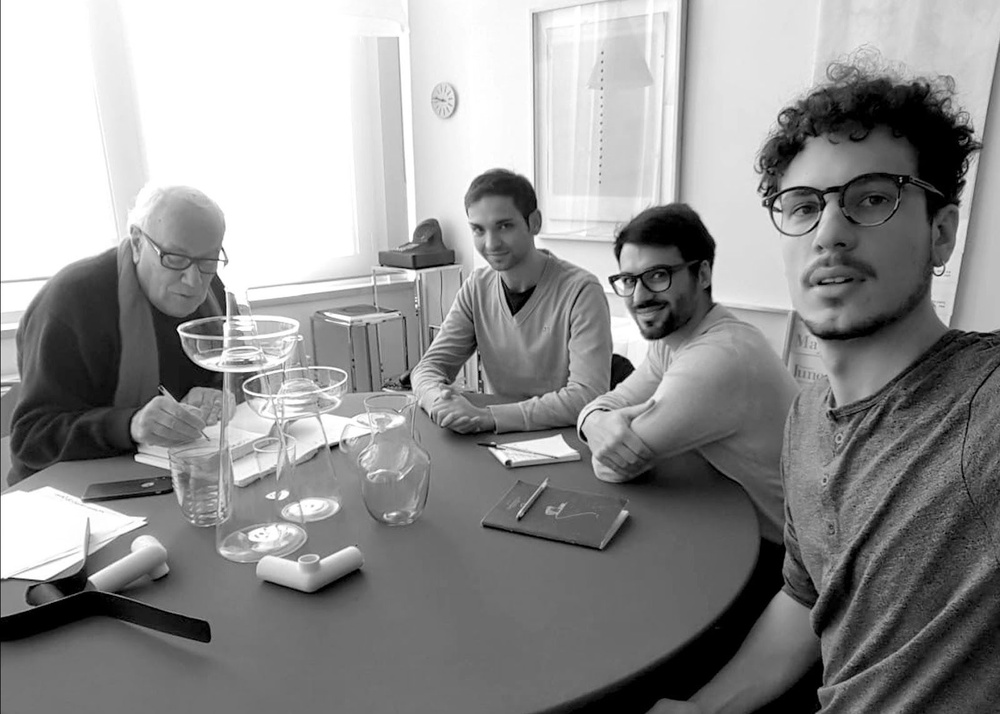So, if you opened this link, chances are you are probably interested in knowing a bit more about us and how our research and development method is born.
Let’s jump into the story.
We found our method almost casually. As it often happens, you find something valuable when not looking for it.
At the beginning of our practice, we needed to find clients. We needed to find an entrepreneur to trust us. Not any kind of entrepreneur, but one that believed in working for positive innovation. A guy to merge ethics and profit.
The problem was we haven’t any clue how to do it. (Yes, you do not learn this kind of thing in design school. You have to learn on your own, through on-field experience). We didn’t have anything to start: no network nor good connections. But we needed to go on. No clients meant no studio.
All of a sudden, we got a bit of crazy intuition. We recalled our mind that two years earlier (in 2016), we attended a speech in Superga organized by Enrico Baleri. He is an entrepreneur with great experience and know-how in industrial design, skilled in identifying and training good designers.
During the conference, he had amazed us with his critical ability. He could analyze an object and identify functional and futile design motivations, distinguishing between human-centered design details and fashion ones. He wasn’t influenced by the designer big-name. Moreover, reading about his experience with Gavina and the masters of Italian design, we hoped to take a piece of that experience.
We thought working with him could be a considerable start. So, with nothing to lose, we decided to try and reach him. For some mysterious reasons, we got his email. Our strategy was to write an email to communicate our most genuine desires to make good designs.
Email sent. On the same day, at midnight, we got an unexpected reply. He invited us to make an appointment to talk about our new practice at his studio in Bergamo.
Here we are! First important meeting. We started collecting prototypes of our best designs (in our opinion) and prepare to explain them in the best way possible.
Meeting day. With due tension, we show up at the studio in Bergamo. After a short initial wait, a coffee, and some conversation, the meeting took off. He introduces himself by speaking about his past entrepreneurial initiatives, conversations with great design masters, about his design philosophy.
Our turn. We introduced ourselves, explaining why we started our practice. We spoke about our aim of designing human-centered products, instead of fashion ones. Then, an unexpected plot twist. In showing our prototypes, talking becomes superfluous. By observing, Baleri understood the design ideas even better than us, the designers. And those design ideas were not so good.
In ten minutes, what we before think being good design now resulted in being poor. Of the three projects, not a single one was good. Not exactly what we were hoping. The reason was simple. We designed inventing needs to support our intuitions. We had created fake problems to justify our beloved ideas.
His advice was to completely overhaul our design method, discard everything we had done and start over with a new approach. The task was not easy, to throw away all the things you worked on the past year (and university years). According to him, the only thing we had to maintain was essentiality and the human-centered design mindset.
But after the cold shower, we’ve got one of our best design lessons. He explained the basics of his design method, stolen from Mari, from working and talking with Italian design masters. Consist in first identifying all the possible functional requirements: usability, manufacturing, durability, life-cycle, every aspect of the object’s life. It is done by researching and analyzing the best existing products. The main idea is to evolve, not to invent from scratch.
After that, you start designing.
What’s fun is that, through this process, the design begins to take shape almost spontaneously. After fulfilling the functional requirements, there is room for irony, for the idea, for the intuition. Duty first and then the pleasure.
Just after the explanation, we got a challenge. We had to apply the new method to a new project with him. The task was designing a collection for pets, a contemporary one designed according to their behaviors. What’s more, we had to organize a university workshop to talk about our project.
The meeting ended, but we together moved to his home for lunch.
The discussion continues with anecdotes about pure designs. One honestly showing the materials and technologies.
After lunch, we leave Bergamo with a new design method and a new approach to the profession. We got confidence in analyzing and criticizing, training ourselves in finding the differences between human-centered and poor designs.
We now got a clear and proven method based on precise steps. It allowed us to detach from our ego, not inventing things from scratch but designing from the best already done. Now our mindset was about evolving instead of inventing.

